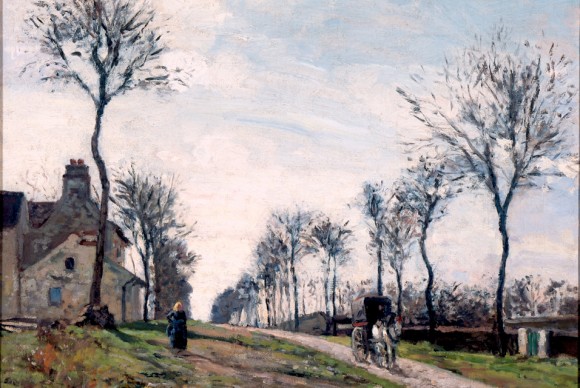Memphis Brooks Museum of Art Presents Monet to Cézanne/Cassatt to Sargent: The Impressionist Revolution
MEMPHIS, TN.- Alive with color, flickering light, and spontaneous movement, Impressionist and Post-Impressionist paintings are arguably the most recognizable and popular visual art of our time. Because of their familiarity and immediate appeal, it is easy to forget how these canvases first shocked and then eventually transformed the art world. The exhibition is on view at the Memphis Brooks Museum of Art from July 16th through October 9, 2011.
Monet to Cézanne / Cassatt to Sargent: The Impressionist Revolution offers a rare chance to rediscover masterworks by celebrated members of the movement. The exhibition features over 85 paintings and works on paper. It traces Impressionism as it evolved through the nineteenth century and into the modern era, both in France and the United States.
Radicals and revolutionaries, the Impressionists broke the rules of traditional painting. Around 1870, members of the movement such as Claude Monet and Camille Pissarro began freely brushing oil pigments onto canvases with little or no under-drawing and using quick dabs of unblended colors. In addition, the Impressionists took their canvases out of the studio into open fields and public spaces. These techniques gave their pictures a sense vibrant energy.
Their canvases—like Monet’s splendid Autumn on the Seine, Argenteuil (1873)—capture the shifting effects of sunlight, air, and movement. Avoiding traditional subject matter such as religious or historical topics, the Impressionists instead focused their attention upon realistic images of modern life, such as train stations, rustic landscapes, or casual public gatherings. Although at first reviled by the public and critics, Impressionism gradually gained not only acceptance, but French and international followers. Among them were Mary Cassatt, John Singer Sargent, and Theodore Robinson, Americans who were drawn to the style’s spontaneity and fresh approach. Many artists worked side-by-side with French masters. Robinson, for instance, settled next door to Claude Monet in the French town of Giverny. Here he painted nuanced, light-filled canvases such as The Lane (ca. 1893-1895). The American Impressionists also returned to the United States to teach and to advise collectors, ultimately helping to popularize the style in their native country.
By the 1880s, some of the original Impressionists and other artists began to explore new directions of artistic expression. Later called Post-Impressionists, they continued using energetic tones, distinctive brush strokes, and everyday subject matter, but tended to paint in unnatural or arbitrary colors, using geometric shapes and distorting forms for expressive effects. Emile Bernard’s striking Still-Life with Orange (1887) is a fine example of the movement, as is Paul Cézanne’s arresting Trees and Rocks, Near the Château Noir (ca. 1900-1906).
The Impressionist Revolution is jointly organized by the Memphis Brooks Museum of Art and the High Museum of Art, Atlanta. It also features works from the Dixon Gallery and Gardens. The collaborative effort brings together three important collections of French and American Impressionism and Post-Impressionism, comprising works from many of the major masters of these schools. Spanning the 1850s through the 1920s, the exhibition will consider the movement as it evolved and spread, forever redefining the visual arts.
Related posts:
- John Singer Sargent Exhibition at Adelson Galleries Explores Impressionist Period
- Museum Explores Relationship Between Two Iconic Painting Series by Monet and Lichtenstein
- New York’s Fenimore Museum Unveils Sargent’s Women
- Rare Mary Cassatt Painting on View at the Mint Museum Randolph Due to Long-Term Loan
- Allentown Art Museum Names J. Brooks Joyner President and CEO

